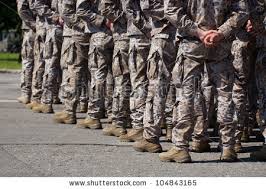Journalists Accept Dubious Lines About Gay Troop Disruptions
Experts Caution Against Exaggerating Hurdles of Transition
SANTA BARBARA, CA., – Researchers at the Palm Center today voiced concern that media reports are legitimizing the fear tactics of anti-gay obstructionists with uncritical reporting about gay troop disruptions. Those familiar with the history of debate over “don’t ask, don’t tell” say that allegations of disruptions to the force and baseless questions about implementation problems are part of a long-term strategy designed to block repeal by making it seem riskier than it is.
A front page New York Times story today said the implementation of openly gay service “may be an equally difficult task” to the 15-year struggle to overturn the ban and that “a host of thorny practical questions will face the Pentagon if Congress” repeals the ban. Other major media outlets, including the Associated Press, have also reported that the transition to a policy of open service will be fraught with difficult challenges that few know how to resolve, a line reinforced by the Pentagon’s claims that it needs months to study implementation.
But Aaron Belkin, Director of the Palm Center, says this is a “false debate” taken up too readily by even mainstream journalists. “There is zero evidence that the transition will be difficult,” he said. “In fact, research across the board shows that implementation of openly gay service is a non-event and that the only thing that could make it bumpy is the suggestion by leaders that there’s cause for alarm.” Belkin pointed to research by the Government Accountability Office, the RAND Corporation, and the Palm Center showing that just two variables are relevant in ensuring a smooth transition: signals of confidence by leadership and a clear, single standard of behavior that applies to everyone. He also said that, unlike ending racial segregation, lifting “don’t ask, don’t tell” does not require massive change, such as the movement of personnel or newly integrating units, since gays are already integrated into units throughout the force, and polls show that many of them already serve openly.
Christopher Neff, Associate Director of Palm, said that opponents of gays in the military have long used scare tactics to try to block gay service. “From Sen. Sam Nunn in 1993 to Rep. Buck McKeon today,” said Neff, “opponents of reform have rolled out a parade of horribles, pretending we don’t have enough information to take a single step forward. If our military actually operated this way, we’d all still be speaking with British accents.” Neff said it was “troubling” to see journalists accepting charges of disruption as legitimate when what’s really going on is “a coordinated fear strategy.” He pointed to the language in today’s Times story and said it presented as fact what is actually a tactic: “The Times says there are ‘a host of thorny practical questions’ that must be resolved. Actually, nine out of ten have already been resolved, but opponents keep pretending that implementation will be ‘thorny’ as a way to stop it.”
Press stories have been saying that questions linger about whether there will be separate housing for gay troops, whether some units will continue to ban open gays, and whether chaplains and others with religious opposition to homosexuality will be forced out of the military. “These questions are completely off the table,” said Belkin. “Despite the backing of separate housing from the Marine Commandant, there is simply no serious proposal to build different quarters for gay people. Remember, lifting the ban allows gay people to identify themselves, but does not compel them to do so, and that’s what would be required if gays were to be forced into separate quarters. This is not a thorny question–it’s a red herring.” Some questions about whether same-sex partners would be offered housing and visitation rights, Belkin said, are yet to be determined. “But these are not implementation challenges; they are policy questions, and they don’t affect implementation.”
Belkin also disputed the notion that “don’t ask, don’t tell” gave “protections” to gay people, a point made by a lesbian soldier in the Times story. “Some gay service members have said the current policy makes it easier to conceal their identity because they’re not asked if they’re gay,” he said. “But the history and the data tell a different story, which is that both discharges and harassment went up under ‘don’t ask, don’t tell’ and that a majority of troops already believe there are gays in their units. Any feeling of being protected by the gay ban is a false sense of security.”
